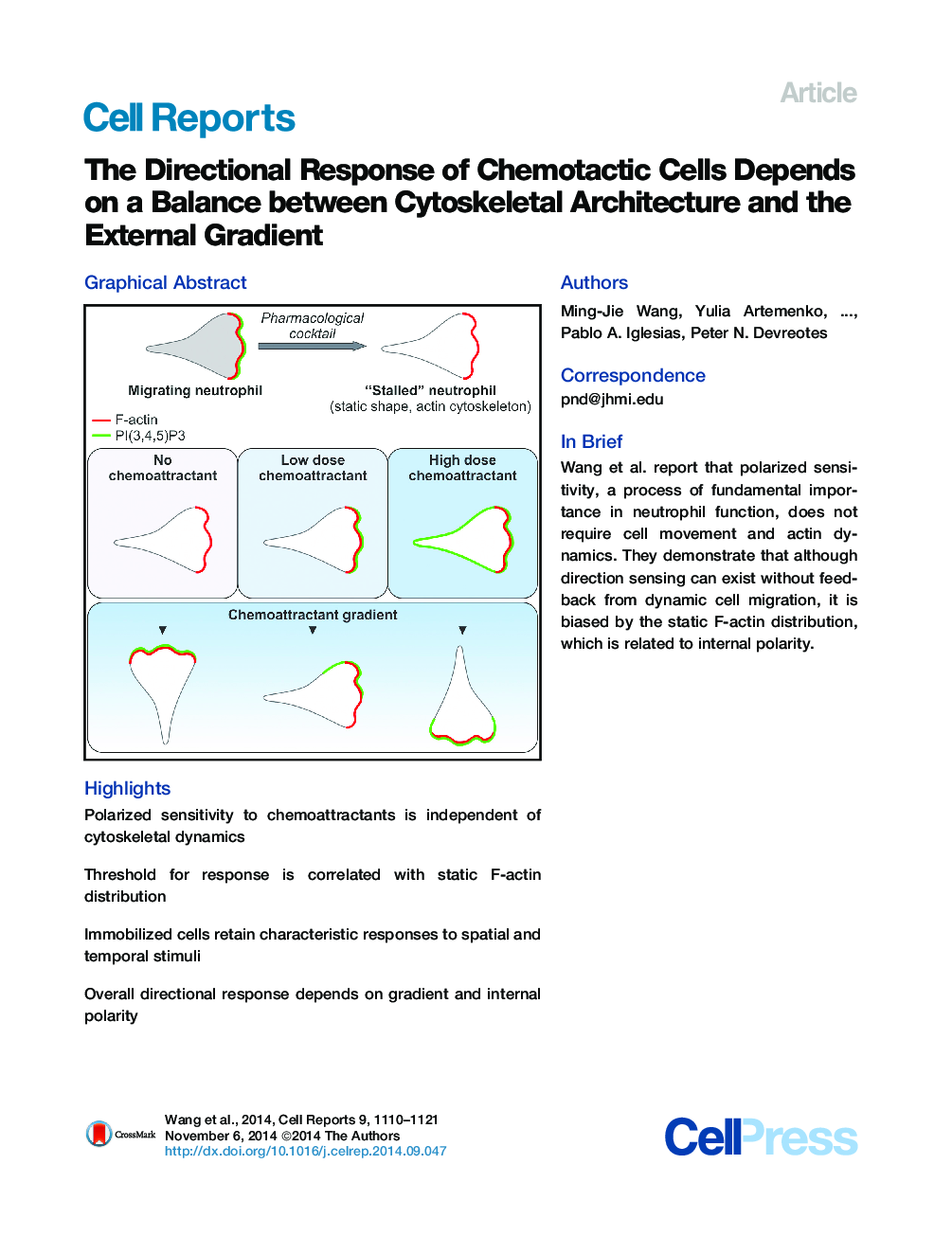| Article ID | Journal | Published Year | Pages | File Type |
|---|---|---|---|---|
| 2040064 | Cell Reports | 2014 | 12 Pages |
•Polarized sensitivity to chemoattractants is independent of cytoskeletal dynamics•Threshold for response is correlated with static F-actin distribution•Immobilized cells retain characteristic responses to spatial and temporal stimuli•Overall directional response depends on gradient and internal polarity
SummaryPolarized migrating cells display signal transduction events, such as activation of phosphatidylinositol 3-kinase (PI3K) and Scar/Wave, and respond more readily to chemotactic stimuli at the leading edge. We sought to determine the basis of this polarized sensitivity. Inhibiting actin polymerization leads to uniform sensitivity. However, when human neutrophils were “stalled” by simultaneously blocking actin and myosin dynamics, they maintained the gradient of responsiveness to chemoattractant and also displayed noise-driven PIP3 flashes on the basal membrane, localized toward the front. Thus, polarized sensitivity does not require migration or cytoskeletal dynamics. The threshold for response is correlated with the static F-actin distribution, but not cell shape or volume changes, membrane fluidity, or the preexisting distribution of PI3K. The kinetics of responses to temporal and spatial stimuli were consistent with the local excitation global inhibition model, but the overall direction of the response was biased by the internal axis of polarity.
Graphical AbstractFigure optionsDownload full-size imageDownload as PowerPoint slide
